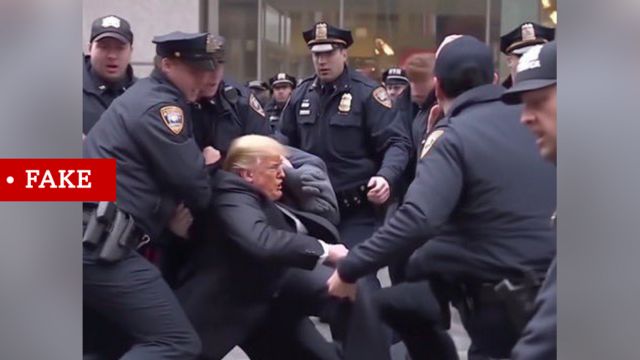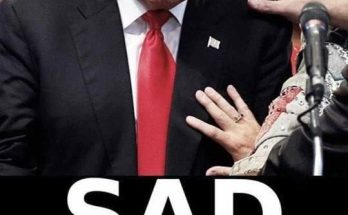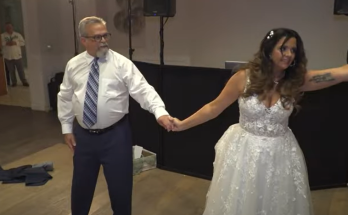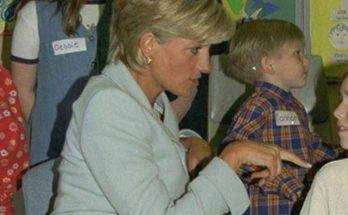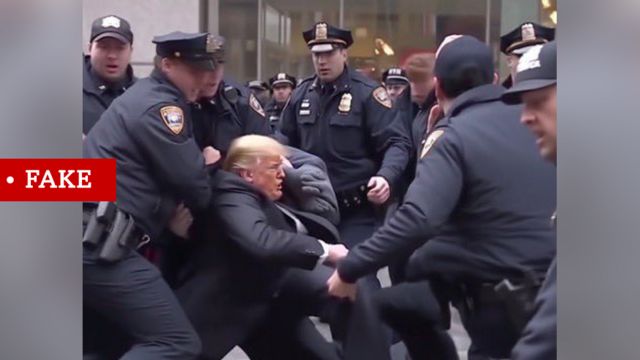
Former U.S. President Donald Trump posted this image of himself generated by artificial intelligence, but a closer look shows that he is missing fingers.
Fake images created by artificial intelligence (AI) tools portraying Donald Trump have appeared on social media over the past week.
Many falsely showed the arrest of the former president, who has said that he may face an accusation by the justice system in the coming days for the alleged payment of money to a woman with whom he had a relationship.
At the moment, the former president has not been charged with any crime.
Many of those who shared the images pointed out that they were fake and that they did not seem to fool many people, but some did seem to be deceived.
On Thursday, Trump also shared an AI-generated image on his own social network, Truth Social. It showed him kneeling in prayer.
What are some telltale signs of AI-generated images? And how do you
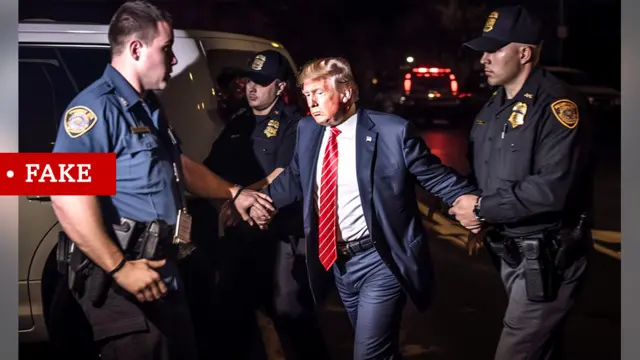
This image looks realistic, but take a closer look at Trump’s right arm and neck.
The images circulating on the internet, like the one above, seem hyper-realistic, more like staged artistic shots than photographs of the moment.
A closer look shows some obvious clues that something isn’t quite right.
Look at the center of the image. Trump’s arm is too short, and the police officer on the left is grasping something that looks more like a claw than a human hand.
Similarly, if you focus on Trump’s neck, you’ll notice that his head appears to be superimposed on the image.
Henry Ajder, an AI expert and presenter of the BBC radio series The Future Will be Synthesised, says that current technology is not very good at representing certain parts of the body, especially the hands.
“If you zoom in on images, you can often see inconsistencies, such as the number of fingers,” he says.
What do others say?
A simple check on some news sites is a surefire way to check that Trump hasn’t been arrested or even charged, at least, not yet.
If and when Trump faces charges, it will make front-page news around the world. And you can imagine the media uproar if the former president somehow fled from the police.
Another good idea is to think about the context in which an image is shared. Who shares it and what are their reasons?
Often, people share images to amplify their political views, even without verifying that the photos are authentic, Ajder says.
“We’ve seen really crude examples of other fakes, such as Nancy Pelosi being slowed down to make her look drunk,” he adds. “That was a crude manipulation, and yet many were fooled by it, or at least wanted to believe it.”
More Strange Details
 Image source,Eliot Higgins
Image source,Eliot Higgins
Caption, What’s blurry here? Look at the faces in the crowd.
A closer look at the photos reveals more dubious details.
Unnatural skin tones and faces with waxy or blurred features are strong indications that the image is fake.
In the image above, a person with a blurred face is clearly visible at the top right. And Trump’s hair appears blurry, while his face is in focus.
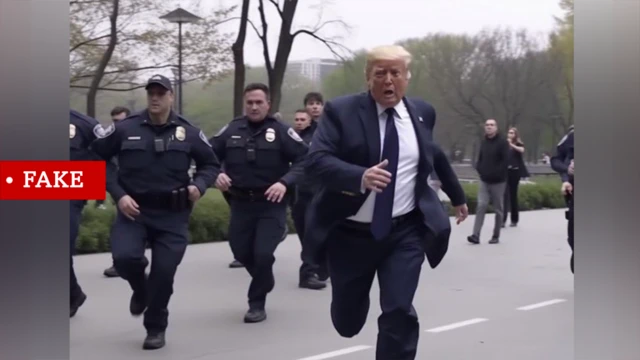 Image source,Eliot Higgins
Image source,Eliot Higgins
Caption, Are those cops really going after Trump or are they looking for something else?
Moreover, artificial intelligence technology has not yet mastered accurate representations of the eyes.
In the image above, the agents appear to be chasing Trump, but they are looking in a totally different direction.
Problems in the future?
Artificial intelligence experts told the BBC that while fake images are “nothing new”, the speed of progress within the field and the potential for misuse are something to worry about.
“Synthetic content is evolving at a rapid pace and the gap between authentic and fake content is becoming increasingly difficult to decipher,” says Mounir Ibrahim of Truepic, a digital content analytics company.
Experts agree that Trump’s fame makes fakes easy to spot. But images of unknown people could make the task difficult, and technology is getting better all the time.
Remember that you can receive notifications from BBC Mundo. Download the new version of our app and activate them so you don’t miss our best content.
